North Wales Castles of the Coast and Countryside!
Our region has some of the most well-preserved castles in Europe, and these, combined with the stunning scenery that surrounds them makes for a wonderful day out in North Wales.
Most of the castles people are familiar with form part of Edward I’s infamous ‘Ring of Steel’. These are the massive castles that guard North Wales, from Conwy to Harlech. This menacing and intimidating string of fortresses was one of the biggest medieval building projects in Europe.
Edward’s famous castles aside, there are some equally impressive yet lesser-known strongholds just begging to be explored. Each with its own fascinating story to tell, they also played a major role in Welsh history. Have we got your attention? Let’s explore!
Deganwy Castle – nearest station Deganwy
Deganwy Castle is little more than a few ditches and piles of rubble and masonry today, but it has a history dating back more than 1,000 years.
The twin rocks – called the Vardre – that the castle would have sat upon boast some of the finest views in North Wales. On a clear day you can see for miles around; testament to the site’s strategic importance as a fortress.
The Welsh probably inhabited the site from the 2nd century but the first stone castle was constructed by Norman lord, Robert of Rhuddlan, in 1080. This was destroyed by the Welsh who retook the site at the end of the 12th century.
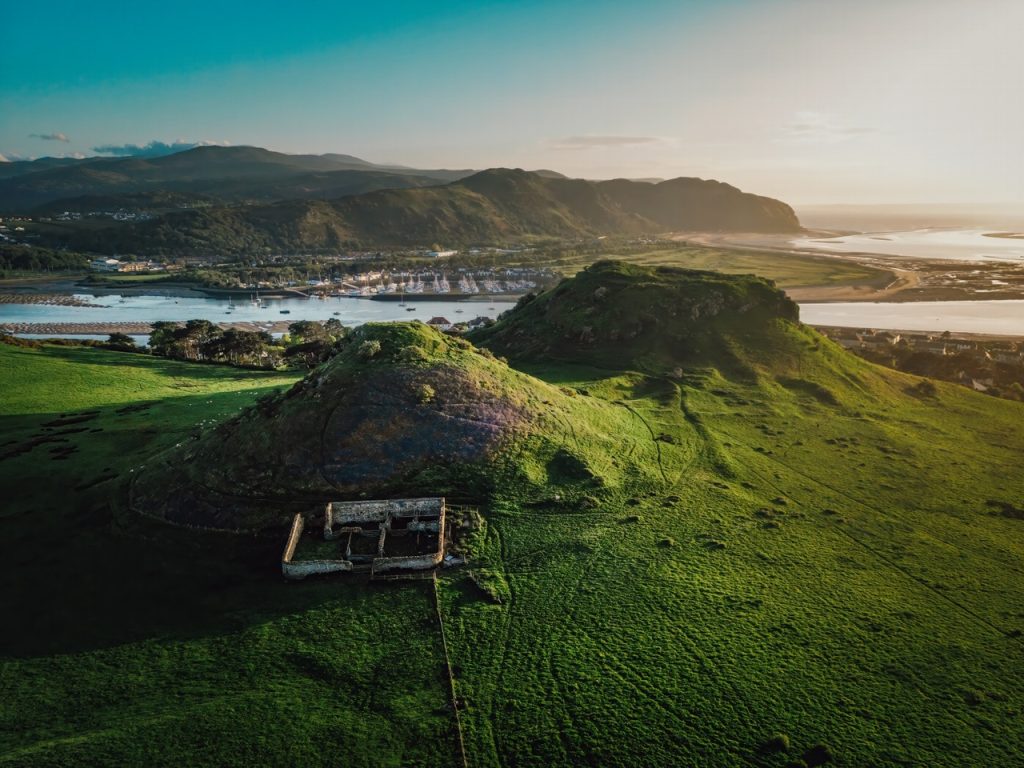
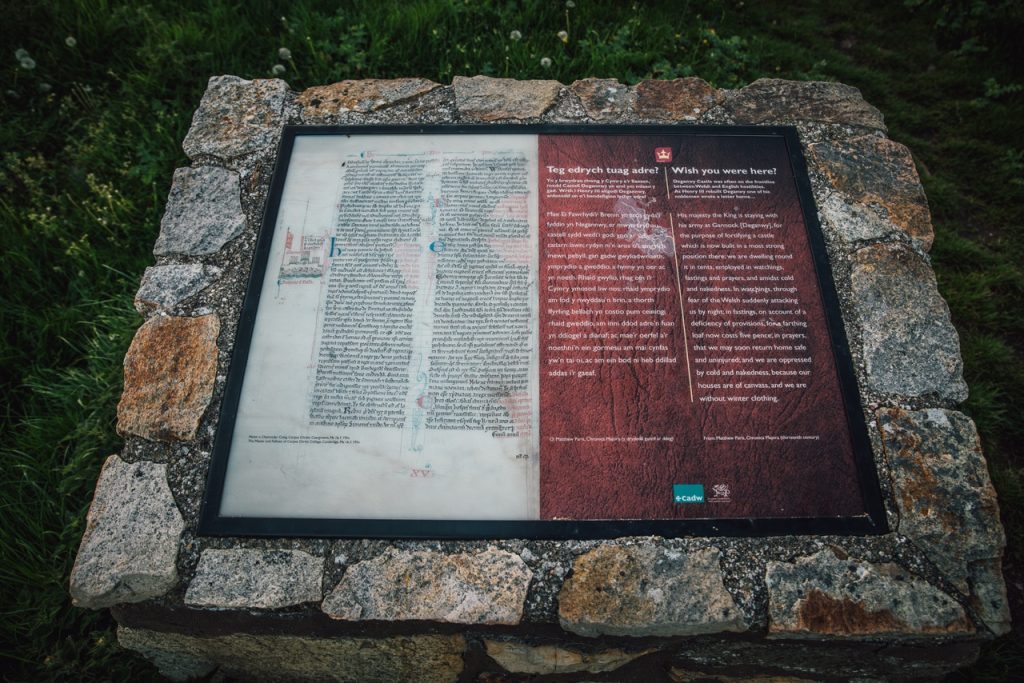
© Hawlfraint y Goron / © Crown copyright (2024) Cymru Wales
A new fortress was built by Llewelyn the Great in 1213 but not much of that remains either. Following his death in 1240, his sons took the decision to destroy the castle rather than give it up to King John. When the English arrived, they had to sleep in tents because the demolition was so effective!
The remains you see today are a relic of the castle’s occupation during the reign of Henry III. The site was eventually abandoned completely when Henry’s son, Edward I, chose Conwy as the site of his new castle, owing to its important riverside location. Local legend says that Deganwy Castle stones were used to build Conwy Castle and the town walls.
Conwy Castle – nearest station Conwy
This iconic stronghold is one of Edward I’s Ring of Steel. It is easily accessed from Llandudno Junction station, being a pleasant 20 minute stroll across the bridge to Conwy town. It’s so famous and so easy to get to, we just had to include it.
As you approach Conwy over the road bridge, the castle quickly dominates the skyline, skulking at the river’s edge like a huge, grey monster. It’s easy to imagine how imposing this structure would have appeared to the native Welsh and how off-putting it was for would-be rebels!
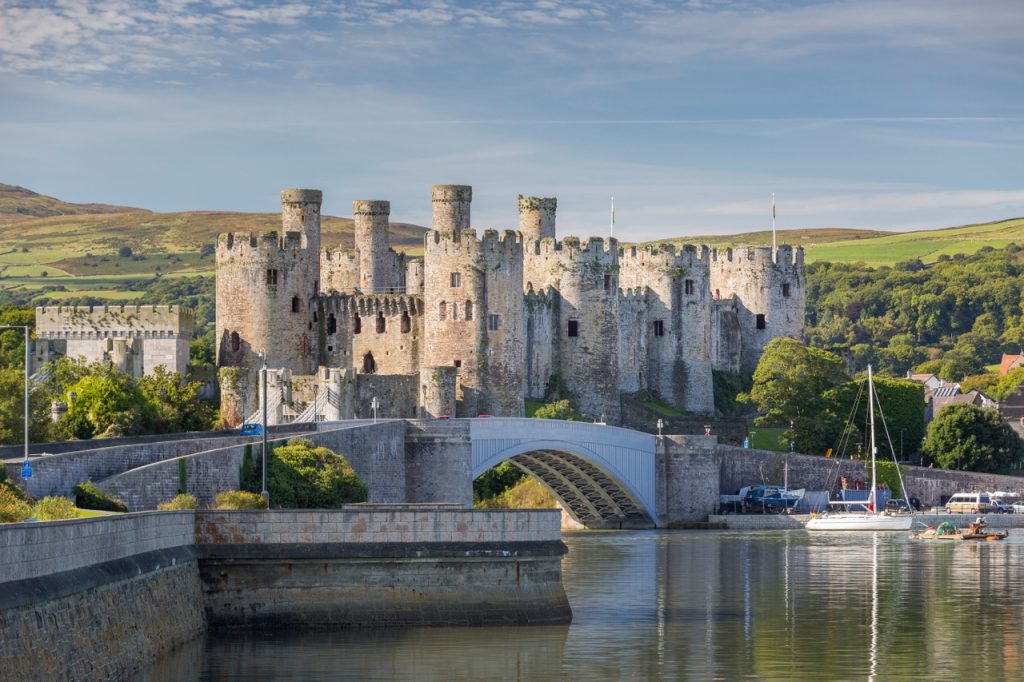
Built by James of St George (Edward I’s master castle-builder), it is one of the best-preserved medieval castles in Britain. And if you think the outside’s impressive, just wait until you see the inside!
Unlike other castles of its era, it is rectangular in shape, probably to take advantage of the lay-of-the-land it was built upon. With two massive barbicans (fortified gateways), eight imposing towers and a great hall, Conwy projects a sense of strength and grandeur upon all who set foot within its walls.
Conwy Castle & Walls is a UNESCO World Heritage Site and the historic town is one of the biggest attractions for visitors to North Wales. You can walk around the ¾ mile walls that encircle Conwy, giving you a unique viewpoint on the town and those who live within. From the battlements, you are treated with stunning views of the sea and mountains as well as fascinating glimpses into the back gardens and alleyways of the residents of Conwy.
Dolwyddelan Castle – nearest station Dolwyddelan
The site of Dolwyddelan Castle is said to be the birthplace of Welsh national hero, Llywelyn the Great. This is not quite true. The reputed site of Llewelyn’s birth is the nearby hillfort of Castell Tomen, see if you can make it out from the tower of Dowyddelan.
Like Dolbadarn in Llanberis, Llewelyn constructed this simple tower stronghold from local slate and, while indisputably ‘castle’ in design, the interesting choice of building materials makes it unmistakably Welsh.
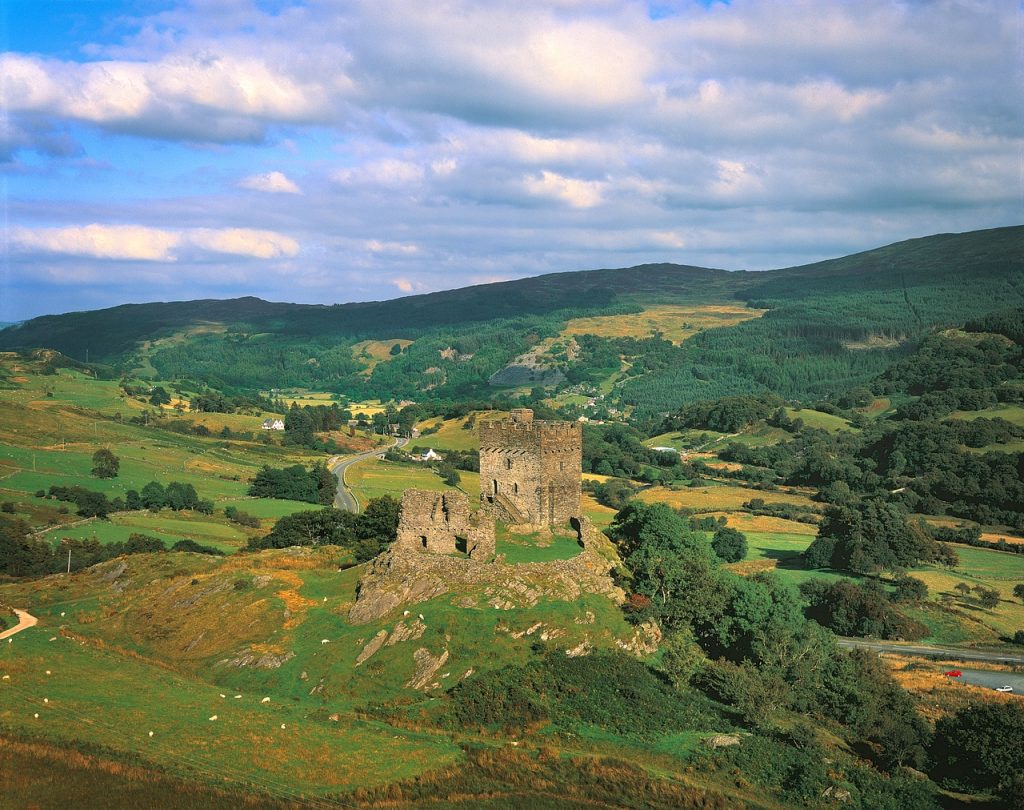
After Llewelyn’s death, it was added to by Edward I, who repaired it and built a second tower. After Edward’s Ring of Steel was constructed, Dolwyddelan’s strategic importance waned but the castle endured. Down the centuries, another storey and the castle’s distinctive crenelated battlements were added until it came under the stewardship of CADW – the organisation responsible for the preservation of Welsh historic monuments – in the 20th century.
The hike to the top is worth the effort where you will be rewarded with outstanding views of the Lledr Valley.
Penrhyn Castle – nearest station Bangor
Penrhyn Castle presents a unique blend of historical grandeur and natural beauty, making it a captivating destination for visitors. This Neo-Norman castle, cared for by the National Trust, was constructed in the 19th century in a medieval style. Today it stands as a testament to the architectural ambitions of the Victorian era. Its location is strategic, offering stunning views between the rugged landscapes of Eryri (Snowdonia) and the magnificent Menai Strait, embodying the Victorian era’s fascination with power and prestige.
The castle’s history is as grand as its architecture, marked by its role in the social and economic narratives of the time, especially in relation to the nearby Penrhyn Quarry in Bethesda. This aspect adds a layer of complexity to its legacy, reflecting the wealth and influence derived from industrial endeavours, alongside the social tensions they engendered.
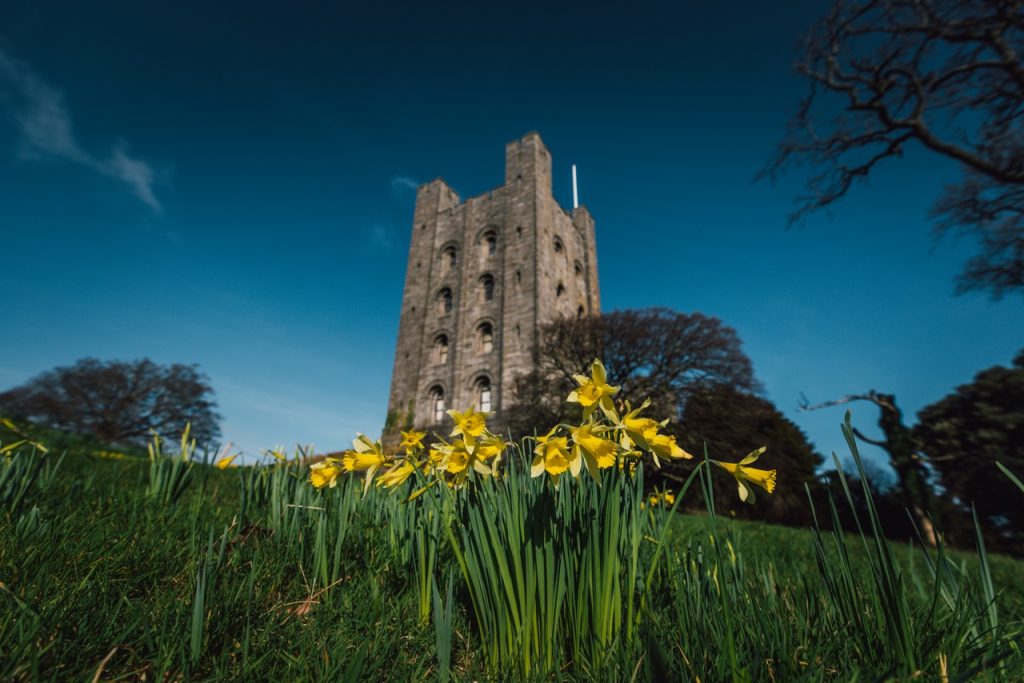
Visitors have the opportunity to delve into the castle’s past and explore its opulent interiors. The access to both public and private spaces within the castle, including the kitchens and bedrooms once used by royalty, allows for a comprehensive insight into the lifestyle and customs of its historical inhabitants.
Moreover, Penrhyn Castle is home to a fascinating railway museum, which not only celebrates the technological advancements of the era but also ties the castle to the local industry, particularly the area’s slate mining heritage. The locomotives on display highlight the pivotal role of rail in supporting industrial activities and the economic implications of such technologies.
The castle is enveloped in extensive parkland, offering a variety of outdoor experiences from formal gardens to woodland trails, which showcase the meticulous design and maintenance of Victorian-era landscapes. These areas provide a serene backdrop for exploration and relaxation, further enhanced by amenities like an adventure playground, making the castle a versatile destination for both history enthusiasts and families.
Flint Castle – nearest station Flint
A fabulous example of medieval military architecture and the turbulent history of Wales and England, overlooking the Dee Estuary and just a short walk from the train station. Constructed in the late 13th century, Flint was the first of Edward I’s Ring of Steel castles, a strategic network of fortresses designed to impose English rule over Wales.
Being the closest castle to the English border, Flint played a major role in this historic yet infamous venture. Flint’s location on the River Dee was of strategic importance, allowing for easy access by sea and serving as a critical point of defence and supply for the English crown.
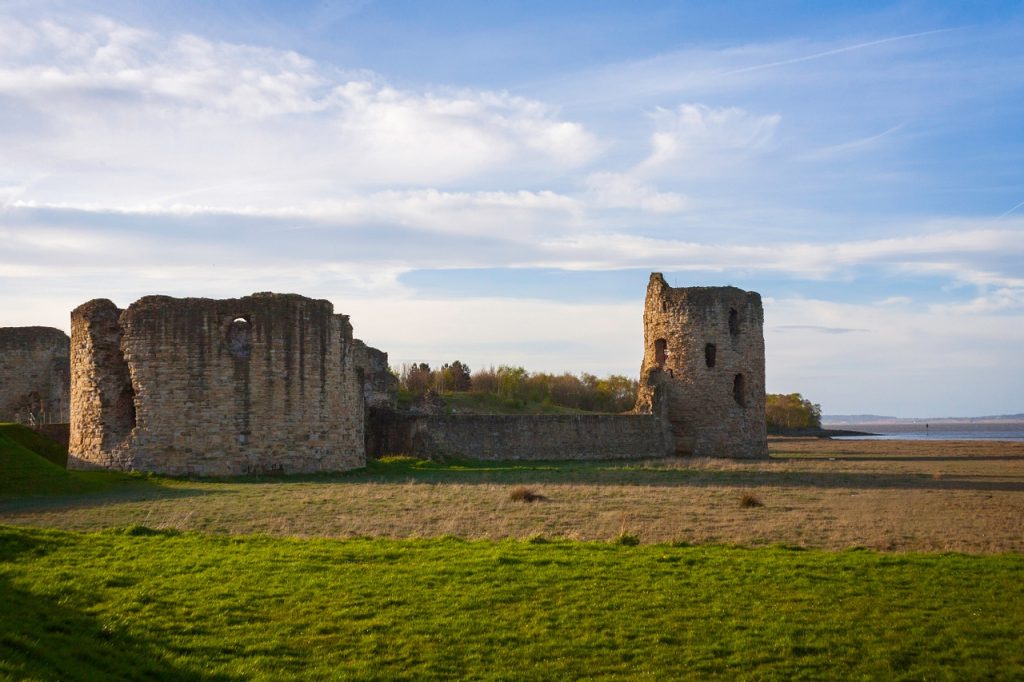
Flint Castle is a superb example of medieval engineering and military strategy, with design features that include a defensive moat and an impressive inner bailey protected by a detached keep, known as a donjon. This donjon, a solitary tower placed on a man-made island within the castle’s walls, is particularly noteworthy for its design and strategic importance.
Despite its initial significance, Flint Castle’s prominence waned over the centuries, especially after the conquest of Wales was completed. It played a role in the English Civil War but was eventually abandoned and fell into ruin. Today, what remains offers a hauntingly beautiful glimpse into the past, with its massive stone walls and remnants of towers inviting exploration and contemplation.
The site is not just a place for history buffs but also for those who appreciate the serene beauty of the Welsh landscape. The views from the castle across the estuary and surrounding countryside are breathtaking and provide a perfect backdrop for reflection on the tumultuous history that unfolded in this very location.
Begin your own legendary journey
So there you have it. A journey from the coast to the mountains; a journey back in time. If you thought North Wales was all about the ‘big 4’ castles – Conwy, Caernarfon, Harlech and Beaumaris, we hope this has given you cause to think again.


